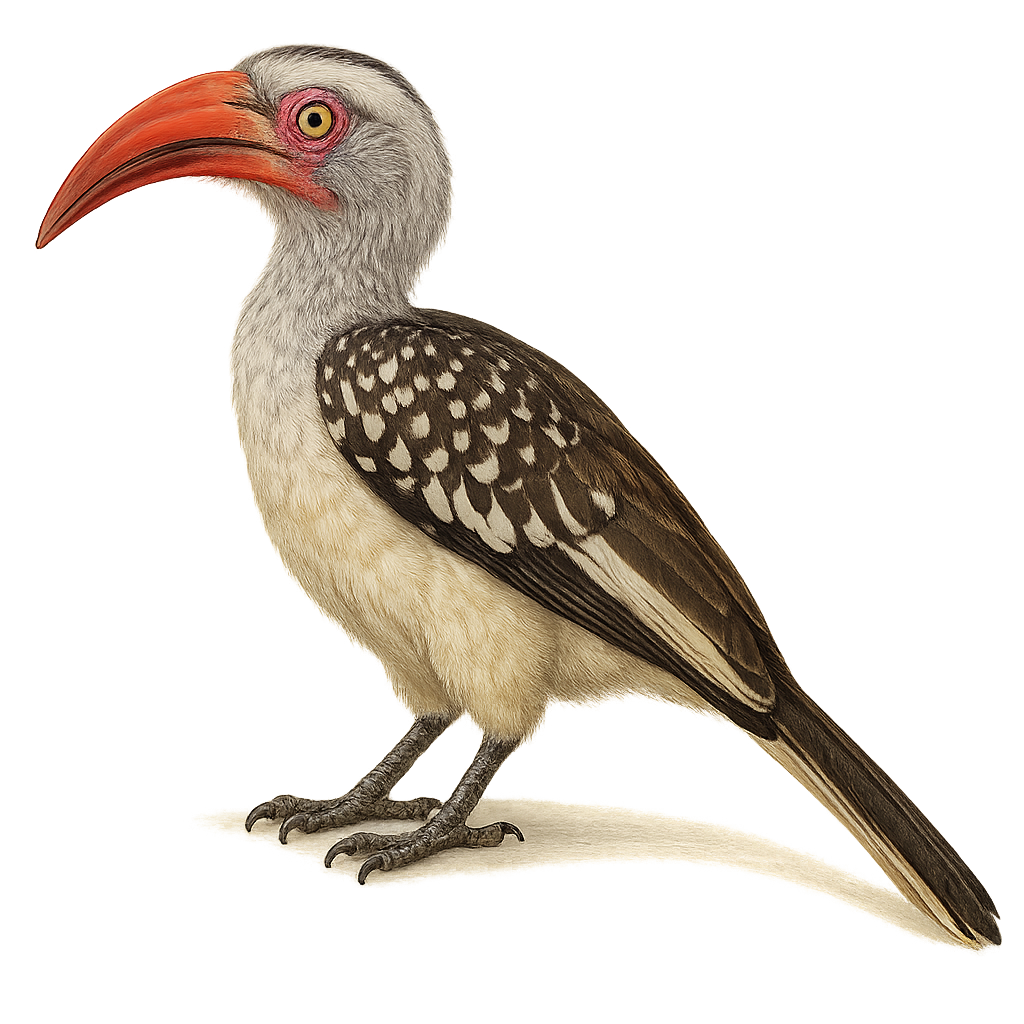Your wildlife photography guide.
Explore the southern red-billed hornbill in detail, study its behavior, prepare your shots.
Where to observe and photograph the southern red-billed hornbill in the wild
Learn where and when to spot the southern red-billed hornbill in the wild, how to identify the species based on distinctive features, and what natural environments it inhabits. The WildlifePhotographer app offers tailored photography tips that reflect the southern red-billed hornbill’s behavior, helping you capture better wildlife images. Explore the full species profile for key information including description, habitat, active periods, and approach techniques.
Southern Red-billed Hornbill
Scientific name: Tockus rufirostris

IUCN Status: Least Concern
Family: BUCEROTIDAE
Group: Birds
Sensitivity to human approach: Suspicious
Minimum approach distance: 10 m
Courtship display: February to March
Incubation: 24-26 jours
Hatchings: February to April
Habitat:
Savannas, open woodlands, shrublands
Activity period :
Primarily active during the day, with peak activity in the morning and late afternoon.
Identification and description:
The Tockus rufirostris, or Southern Red-billed Hornbill, is a fascinating bird from the Bucerotidae family. It is easily recognizable by its bright red bill and predominantly grey and white plumage. This bird is often observed in the savannas and open woodlands of southern Africa. Known for its social behavior and distinctive calls, the Southern Red-billed Hornbill primarily feeds on insects, fruits, and occasionally small reptiles. It plays an important role in the ecosystem by aiding in seed dispersal. During the breeding season, the female seals herself inside a tree cavity with mud to lay her eggs, leaving only a small opening for the male to feed her.
Recommended lens:
400mm – adjust based on distance, desired framing (portrait or habitat), and approach conditions.
Photography tips:
To photograph the Southern Red-billed Hornbill, it is advisable to use a telephoto lens of at least 400mm to capture detailed images without disturbing the bird. Look for areas where these birds are active, such as savannas or open woodlands. Be patient and discreet, as although these birds are suspicious, they can get used to your presence if you remain still. Take advantage of the early morning or late afternoon hours to benefit from soft, natural light that will highlight the bright colors of their bill.
The WildlifePhotographer App is coming soon!
Be the first to explore the best nature spots, track rutting seasons, log your observations, and observe more wildlife.
Already 1 432 wildlife lovers subscribed worldwide

